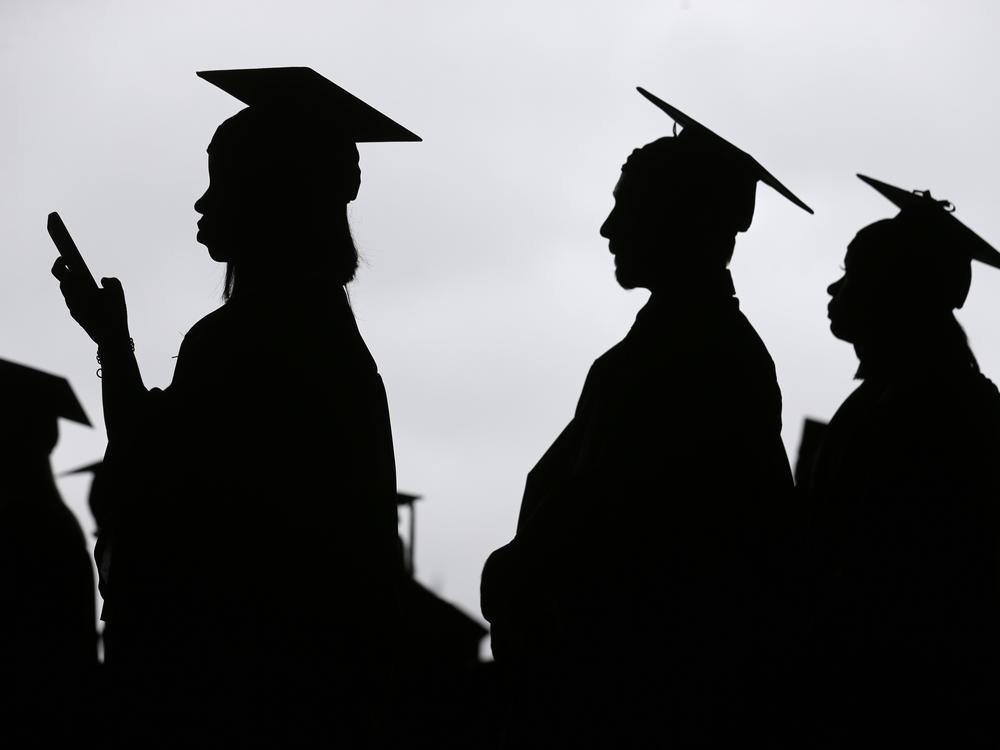Section Branding
Header Content
This year's FAFSA is officially open. Early review says it's 'a piece of cake'
Primary Content
The Free Application for Federal Student Aid (FAFSA) is now open to all students and families hoping to get help paying for college in the 2025-26 school year.
After weeks of testing the online form, the U.S. Department of Education released the official application on Thursday. (The paper form is also now available.) The online FAFSA may not look new, but it's certainly improved compared to last year's version.
"It's a piece of cake, honestly," says Christina Martinez, a financial aid advisor at California State University, Los Angeles. She has been helping students fill out the form during the testing period, and says, "It's been going very smoothly."
That's completely different from what students experienced during the last FAFSA cycle:
After a congressionally mandated overhaul intended to simplify the form, the FAFSA was significantly delayed and the rollout was plagued with problems. As a result, many students had to wait months longer than usual to learn what college would cost them and where they could afford to enroll, forcing many to delay their decisions. There's concern some students decided to put off college altogether. A recent report from the U.S. Government Accountability Office (GAO) found that problems with the last FAFSA "contributed to about 9 percent fewer high school seniors and other first time applicants submitting a FAFSA, with the largest declines among lower-income students."
MorraLee Keller, of the college access nonprofit National College Attainment Network (NCAN), says this year's form looks almost identical to the one from last year, but the user experience is significantly improved.
"We really have to spread a very positive message that there's been a lot of work put into this system for 2025-26 to make it a whole different experience than last year. So everyone needs to give the system a chance."
What the Education Department is doing differently this time
Filling out the FAFSA is the only way college students can access financial aid from the federal government and be considered for grants, loans and some scholarships. Every year, more than 17 million students fill out the application.
Typically, the form becomes available to all students on Oct. 1. But this year, that's when the department began testing the form with a limited number of students and institutions. FAFSA Executive Advisor Jeremy Singer said in an August press release that the testing period was intended "to uncover and fix issues with the FAFSA form before the form is available to millions of students and their families."
During the last FAFSA cycle, in addition to glitches in the form, students also struggled to reach FAFSA's call center for help. According to the GAO, "nearly three quarters of all calls to the call center" went unanswered in the first five months of the rollout. This time around, the Department of Education has increased call center staffing – by nearly 80% since January – and plans to extend the center's hours of operation.
"So far, the call center is doing very well," U.S. Under Secretary of Education James Kvaal told NPR. "At the volume we're at now, people are getting their calls answered very, very quickly."
He warns there may be times when higher call volumes lead to wait times, but he's confident it will be a smoother experience overall.
Beth Maglione, CEO and interim president of the National Association of Student Financial Aid Administrators (NASFAA), says she has been keenly monitoring the department's testing process, and is pleased with what she's seen.
"Federal leaders have sort of listened and taken to heart the lessons learned from last year's troublesome rollout and have used those lessons to chart a more stable path forward."
So far, a less painful process
Low-income students and students whose parent or spouse does not have a Social Security number (SSN) – which the GAO refers to as "mixed-status families" – suffered most from the previous FAFSA's troubled rollout. One challenge for mixed-status families was a glitch that blocked anyone without an SSN from filling out the form.
Kvaal says, throughout the beta testing period, "We made a number of changes to make the process easier for parents and spouses who don't have Social Security numbers. Those people are able to get through now, and that was not always possible six or eight months ago."
At Cal State LA, where Christina Martinez works, the majority of students are low-income, and many come from mixed-status families. She says most of her students encountered problems with the form last year, but this year is a different story.
Martinez says the form has more instructive language that helps students avoid mistakes. On average, she says it's taking students about 20 minutes to finish the form, although FAFSA's website suggests allotting about an hour. (The website also includes a checklist for how to prepare for the application.)
Keller, of NCAN, says while she's thrilled about the improvements, she's waiting to see how the new FAFSA system will respond to an increased volume of applications now that the form is officially out of beta testing and open to all families.
Keller has one piece of advice for students and families, which Martinez and Maglione echoed: Fill out your FAFSA as soon as possible.
"Let's not wait. Jump in. Do your FAFSA as quickly as you can," Keller says. "Hopefully students being able to start their FAFSA in mid-November is going to result in things like earlier award letters, more time to make decisions, better decisions."

